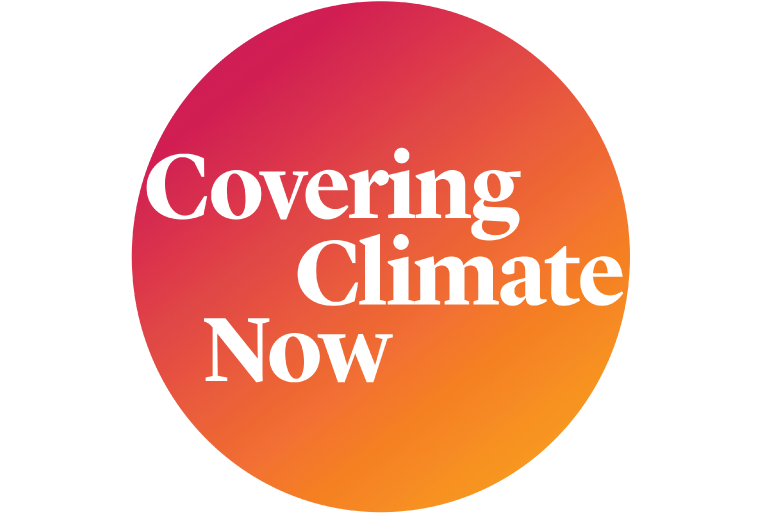Sign up for the daily CJR newsletter.
Climate change is inherently a political story, in that only policy can enact some of the changes at scale that are needed to quickly reduce carbon emissions. Yet, often, political reporting doesn’t make the climate connection. For Akielly Hu, the news politics reporter at Grist, that connection is a full-time job. Last year, Hu left a job in policy research to become a journalist, and from her vantage point the climate-politics beat is brimming with opportunities for dramatic storytelling. What’s more, she says, it’s a great opportunity to connect with audiences, who will all, one way or another, feel the impacts of climate policy in their daily lives.
Covering Climate Now spoke recently with Hu about the stories on her mind this election year, the dynamism of state and local climate policy, and the importance of making the climate-politics connection, particularly when leaders and candidates do not. The conversation, with CCNow deputy director Andrew McCormick, has been edited for length and clarity. Check out Hu’s coverage at Grist here.
Tell us a bit about your background.
I started my career in environmental policy research. I worked at a nonprofit in DC called the Environmental Law Institute on, for example, wetlands protection programs and city-level food waste reduction efforts.
I transitioned to the Institute’s magazine, the Environmental Forum, which is geared toward environmental professionals. That’s where I got my first experiences as a writer and editor, and I found I really enjoyed the challenge of communicating complex, sometimes technical, subjects in a way that’s accessible and engaging to audiences. I wanted to learn more and work on the news side, as opposed to the research side, of policy—and so, since last March, I’ve been at Grist.
After a year of reporting on this intersection of climate change and policy, what’s on your mind heading into this election year?
Every year, Grist does a limited-run summer newsletter about extreme weather. This past year’s, which I had the opportunity to work on, was called “Record High” and focused on heat. We looked at extreme heat from every angle: labor, housing, health, you name it. Last summer was the hottest ever on record, and the impacts were alarming. You just couldn’t deny that heat waves [which have become more frequent and severe due to climate change] are hurting and killing people. This prompted a lot of policy discussions. President Biden, for example, was urged to declare a climate emergency; although he said that “practically” he had, he didn’t declare a formal national emergency. And even in states where governments aren’t known for prioritizing climate, leaders were outspoken and expressed a lot of concern about the need for more heat protections.
Some research is suggesting that this summer could get even hotter, and I’m curious to see how the discussions play out differently in the context of campaign season.
Something else on my mind is following the money, which is a skill I’ve learned at Grist that I’d like to build on more this year. In US politics especially, money is very much at the heart of campaigns and policy. Early in my time here, I was covering a wave of lawsuits and protests against offshore wind, particularly on the East Coast. These were being led by ostensibly grassroots local groups, but if you looked into the money funding their efforts, a lot of it went back to organizations associated with the fossil fuel industry. There was a lot of impressive reporting on this at the time—but, unfortunately, I also saw coverage that didn’t make the connection between these groups and fossil fuels. I think it’s important to always ask: What’s beneath some of this political messaging? Whose interests are being represented that might not be apparent? If we don’t tell this part of the story, audiences get a distorted picture.
You’ve done a lot of work on state and local policy efforts. How do you see climate policy playing out differently at this level than, say, in national politics?
My high school social studies teacher used to say that the federal government is like a soap opera, where the characters stay the same and the same things happen over and over. The more I follow national news, the more this feels true—and the lack of progress can be frustrating!
At the local level, though, there are a lot of exciting efforts to address climate change. It’s cool to see how local people and governments are adapting and trying out innovative solutions.
Last fall, I had the opportunity to report in Maine on a statewide referendum that ultimately failed but would have essentially eliminated Maine’s investor-owned utilities and created instead a nonprofit, public-owned power company—part of a nationwide trend of public-power activism and increasing scrutiny on utilities as institutions that can stifle climate progress. I spent time at a state fair, and I was heartened to see how engaged people were with the issue. Maine is a pretty politically divided state, but regardless of where people I met stood, they were knowledgeable and approached the issue in good faith.
And that makes sense, because power affects everyone’s daily life. It’s a matter of monthly expenses and an issue of energy justice, with huge groups of people who are behind on their bills—including, sometimes, for services they didn’t receive—having the power that they need to survive shut off. That said, utilities infrastructure probably isn’t something the average person is used to thinking about deeply, questions about transmission lines and distribution grids and who owns what parts of the system. But utilities are one of the main players in a transition to clean energy, and they can be helpful or not. So, as a journalist, I felt a lot of responsibility to soak in all the information I could. I found that there was so much local context and history factoring into people’s thinking. There was all the TV advertising, flyers, and door-to-door canvassers. It was fascinating to see how quickly information was being disseminated and the role money was playing in shaping public perceptions.
These local efforts sound like a great way to make climate change tangible to audiences. What other policy trends might have this potential?
Another interesting dynamic playing out—in this case partly in response to national politics, because briefly this was a huge controversy in Washington—is this subject of gas bans as a means of reducing carbon emissions. In Berkeley, California, for example, a ban on new gas hookups, the first such ban in the country, was struck down last April by the Ninth US Circuit Court of Appeals, which, this January, declined to revisit its ruling.
I’ve been interested to see how this ruling will affect similar efforts elsewhere. Cities seem to be adapting their policies and approaches to avoid similar legal hurdles. Also in January, a fellow Grist reporter looked at how Chicago is seeking to implement an electrification ordinance that doesn’t ban gas outright but imposes new emissions standards that effectively preclude the use of gas in new-construction homes; the ordinance frames this in part as a matter of public health. Seattle passed a similar law recently, raising emissions standards, with an eye toward many of the city’s buildings reaching net-zero by 2050.
Stories like this could get wonky fast. Do you have thoughts on how to connect with audiences on these subjects?
It’s a challenge not to get too in the weeds citing laws and regulations. But I’ve learned this year that even policy stories can be great stories. You don’t need to have a single person to focus on, because a local government can also be a great character and the obstacle they’re trying to overcome, for example, might be how to achieve electrification without hitting legal roadblocks. To me, that’s so compelling!
This is what appealed to me about journalism, what makes it different from writing a research paper or something. You’re always thinking about the reader and why anyone should care about this or that subject. There’s always a way to explain something more clearly—and that’s an opportunity, because that’s how we can get people talking about these issues and help create a kind of shared knowledge base among the public.
What would you like to see more of in political news coverage this year?
Something I think about a lot is how to cover issues or ideas that are new or might seem radical. A lot of climate policies feel sometimes written off in the press as politically unrealistic or impractical. But what we consider politically feasible can change very quickly. A lot of it just has to do with public perceptions and priorities, and that’s why activism and local efforts are so important in how we think about politics; these are ways people communicate their priorities to leaders. As for whether something’s practical, a better question to ask might be, How could this policy idea work?
I’ll add that I always like stories with more than one byline, written by reporters on different beats. I’d like to see more work with the bylines of both climate and politics reporters. Sure, when we’re on deadline or under pressure to meet a story quota, it’s probably quicker to go it alone. But as a reader, I find I get a lot more out of stories informed by multiple reporters’ viewpoints—I think a lot of rich reporting comes from this.
So far, climate isn’t being treated as a major factor in this election by either the candidates or much of the political press. Based on your reporting, what’s the potential for climate to factor in?
It makes sense why there are a lot of other issues on voters’ minds. But working at a climate-centric publication, you learn to identify the climate angle even when a story might not seem climate-related or when people aren’t yet framing it that way.
Many of the issues front-of-mind in the national conversation that are expected to hurt or help Biden’s chances at reelection—labor, housing, foreign policy—are connected to climate change. As climate journalists, we think about these connections all the time. But I don’t think that broader understanding of climate change is super mainstream. Drawing attention to the climate aspects of these other stories is a great opportunity for journalists to engage new audiences—even when the candidates aren’t talking about it themselves.
Has America ever needed a media defender more than now? Help us by joining CJR today.









